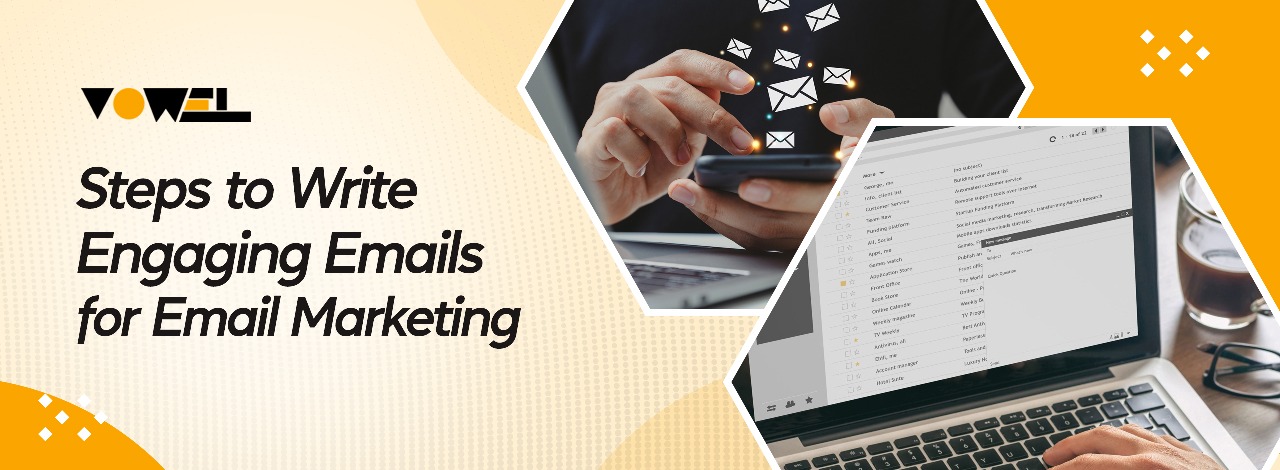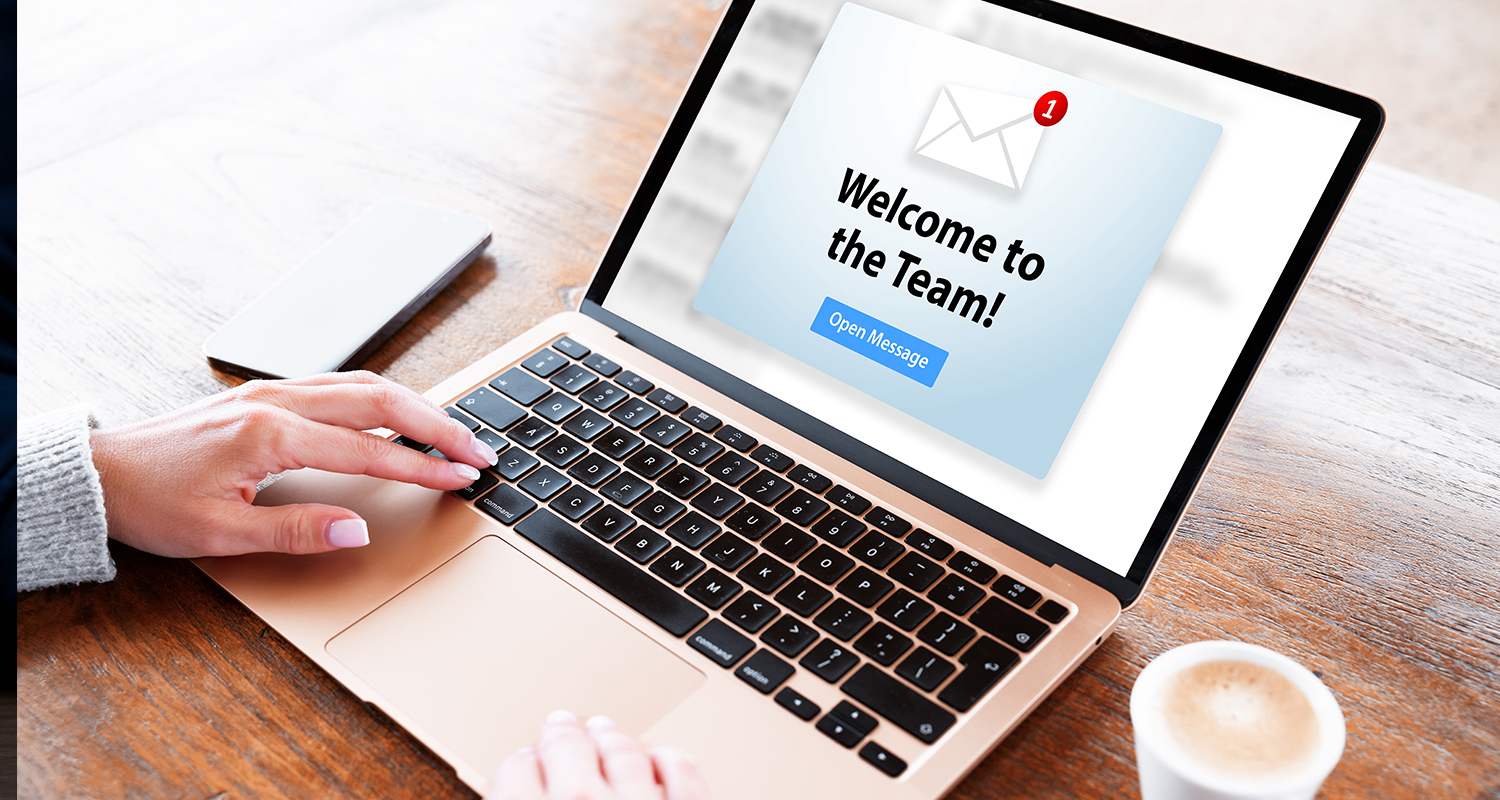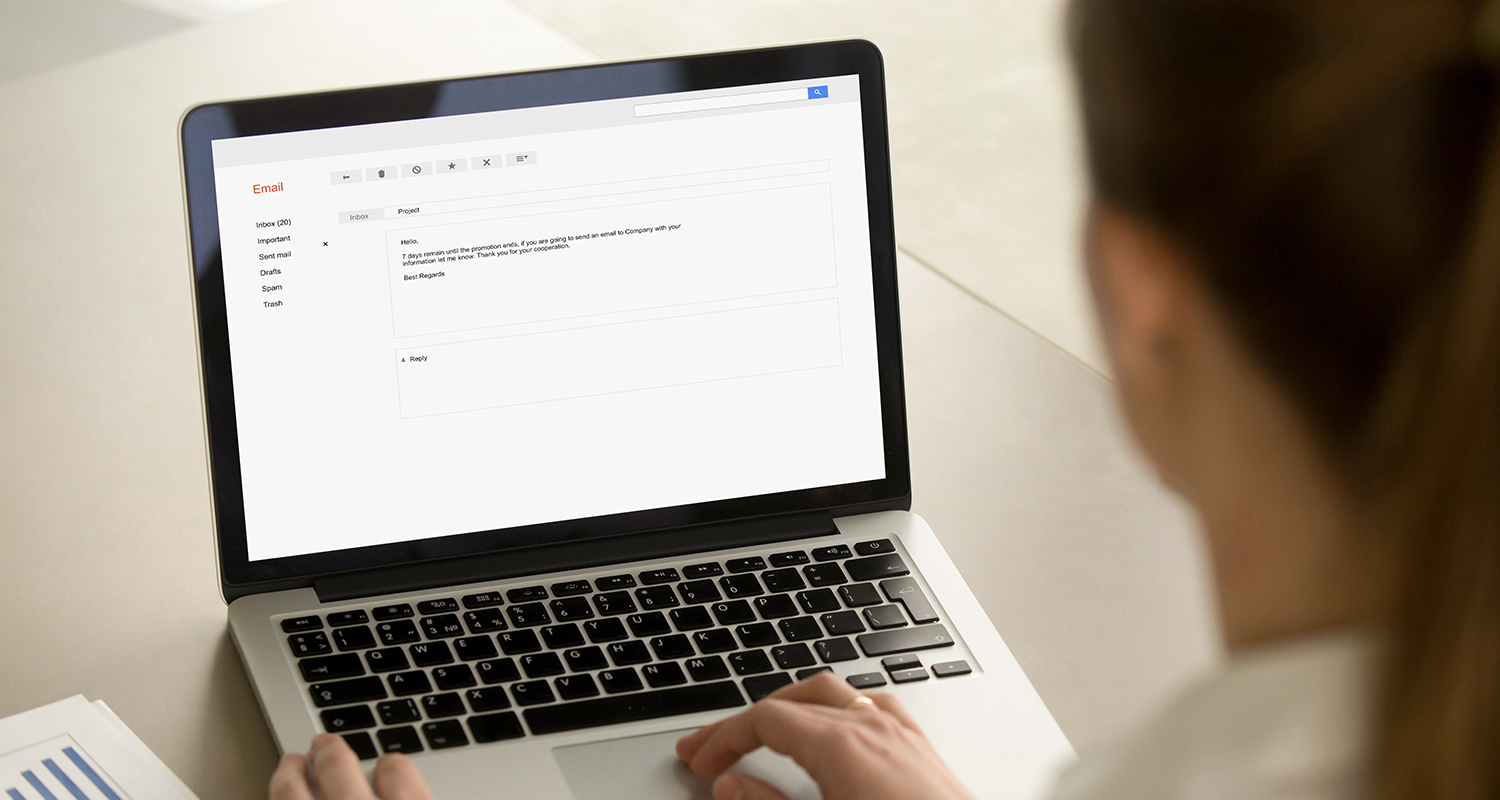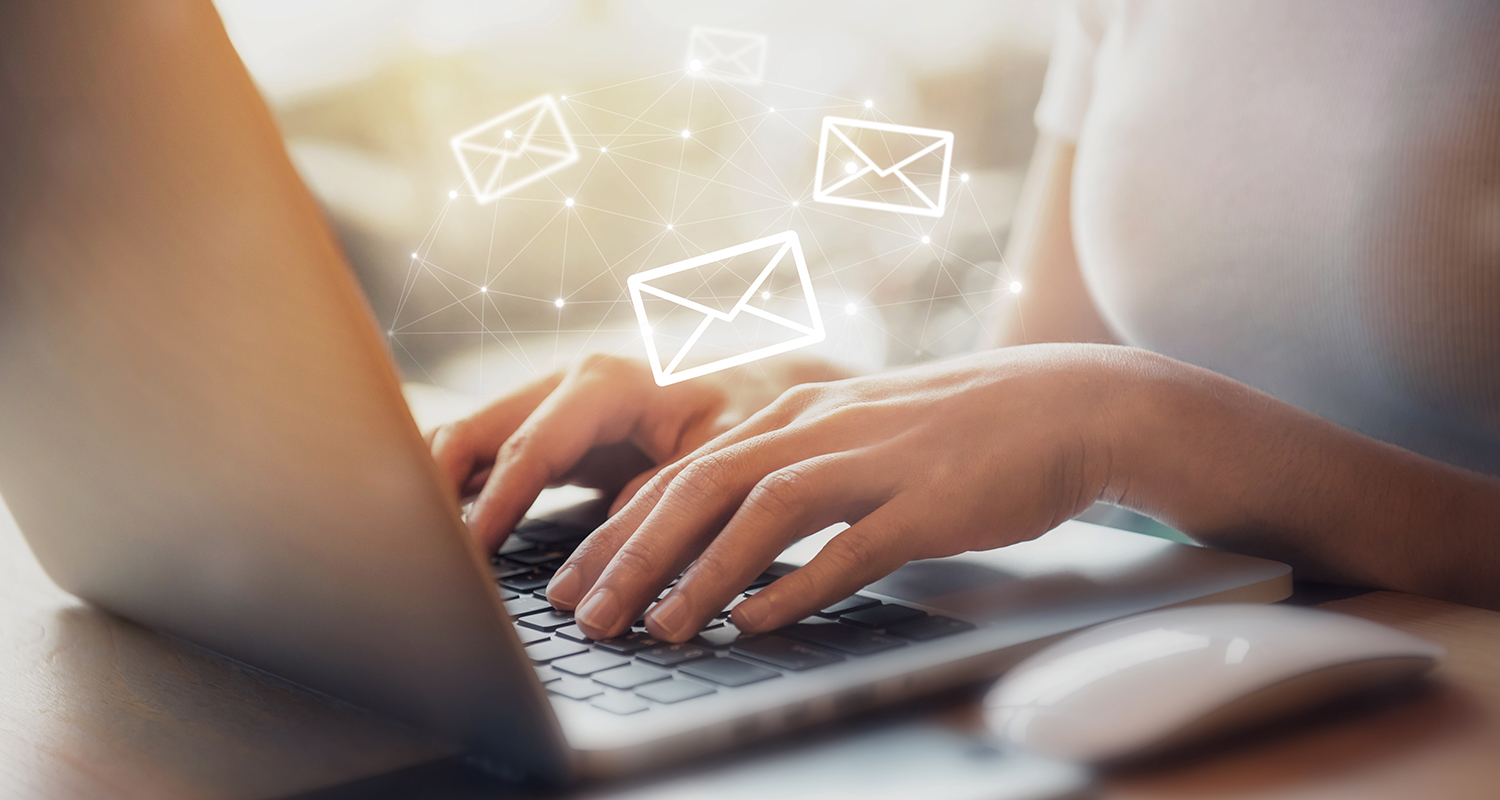

Steps to Write Engaging Emails for Email Marketing
What if there was a method to make your email campaigns more effective?
You may do this using welcome emails, which are an excellent method to increase subscriber engagement naturally. When utilized correctly, these emails establish the tone for the type of relationship you will have with your email subscribers. Unfortunately, many marketers ignore welcome emails. In this post, we will discuss how to make the best use of welcome emails for your own business. We'll go over why you need welcome emails, some great examples and recommended practices, and data to demonstrate how effective these unsung heroes are.
What is the Role of Welcome Emails?

One of the most compelling reasons to send welcome emails is because 74% of your subscribers expect one when they register to your list.
What makes these welcome emails so special?
- E-commerce companies had a 56.8 percent conversion rate for welcome emails.
- They had the highest open rate among all marketing emails, at 68.6 percent.
- Welcome emails have a 4x open rate and a 5x click-through rate when compared to typical marketing emails.
- Subscribers who viewed at least one welcome email received 40% more content from the sender throughout the next 180 days.
Your welcome email sets the tone for your interactions with each subscriber. It introduces subscribers to your way of doing things and provides them with a compelling reason to read and interact with your content.
Points to keep in mind while drafting a Welcome Email

1. Customer demand: Most of the time, our goal with subscribers is to convert them into customers and get them to take action. Subscribers you target should match two important criteria: they must be able to buy and willing to buy. A welcome email allows you to confirm this information.
2. Your target audience: This refers to the precise group of people you want to contact. You should have a thorough awareness of the demographics and psychographics of your target audience. Collecting this data provides you with a thorough insight into your subscribers and customers, as well as the terminology required to demonstrate to customers that you understand them.
3. Customer's Problems: What problem or pain point drove these clients to join your list? You probably already know if they are one of your subscribers. A superb welcome email softly reminds subscribers of their problems and pain areas while pointing to solutions (products and services) to address them.
What are the Best Practices to Bear in Mind While Writing a Welcome Email?

The best method to nail these essential parts is to use a few welcome email best practices. You might compose a good welcome email by luck, but using best practices assures consistency. Here are the six fundamental principles to follow.
1. Start with a Hookline
Your welcome email sets the tone for your interactions with new subscribers. And the subject line? This is the first impression. If you get it correctly, you'll increase open rates. If you get it incorrectly, your email could end up in the garbage.
After analyzing thousands of welcome emails, here's what works:
- Offer" is an example. Clarity triumphs over cleverness.
- Use Personalisation: If possible, include their name: "Welcome, [First Name] - Let's Get Started!" People respond better to personal messages.
- Highlight the Value - If you promised a discount, state it clearly: "Your 15% Off Code Inside!" There are no surprises---just quick benefits.
- Create Curiosity - A little mystery can spark interest. Try: "You're in!" Here's What Happens Next.
- Avoid spam triggers. Avoid all caps, excessive punctuation, and sales terms such as "FREE!!!".
What's the goal? Make your new subscribers feel valued and eager to engage with your brand. Keep it simple, personable, and benefit-focused.
2. Hyper-Personalization
Personalization in welcome emails is no longer just about adding a first name---it's about providing a hyper-personalized experience that makes new subscribers feel as if you actually understand them.
- Go Beyond the First Name - Just saying their name ("Welcome, Sarah!") isn't enough. Tailor content based on data such as location, previous browsing behavior, or registration source.
- Mention Their Interests - If they joined up for a particular product category or downloaded a specific guide, say so: "Since you're interested in email marketing, here are your next steps!"
- Provide Personalised Recommendations: Use AI and automation to recommend related items, blog pieces, or resources. Consider Netflix-style suggestions based on user behavior.
- Use Dynamic Content: Change email sections based on client information. For example, a fitness brand may display several workouts for beginners and intermediate consumers.
- Time It Right - Send the welcome email when they are most likely to respond, based on their time zone or previous behavior.
Hyper-personalization isn't simply a trend; it's the norm. The more personalized the experience, the stronger the connection to your brand.
3. Inform Your Subscribers What to Expect
Customers can sort themselves by subscribing to other lists for more content, removing themselves from a certain list, or unsubscribing entirely. This ensures that your email list remains high-quality. But how can you use this to create a compelling welcome email?
You begin by setting expectations. You can create expectations for:
- Message frequency (e.g., once daily, twice weekly, four times per month, etc.)
- What you will provide to your subscribers (downloads, checklists, curated content, practical advise, tools, etc.)
- When will you send emails to subscribers (mornings, evenings, weekdays, or weekends)
- The format of each communication (plain text, plain HTML, responsive). How lengthy will your messages be?
- Having subscribers add you to their "safe senders" list helps ensure that your emails end up in their inbox.
The purpose here isn't to set expectations for each of these elements. It is to identify and address your consumers' most important demands. Setting these expectations allows customers to decide if they want to join your list or unsubscribe and go on.
What is The Role of Micro-Yes Sequence?
A better approach is to employ a micro-yes sequence to develop your relationship with subscribers. A micro-yes sequence is beneficial because it creates a loop of positive engagement with your subscribers, fostering rapport and quietly persuading them to act.
Here's how a micro-yes sequence can help you sell more items and services.
- Subscribers begin to trust you and become more comfortable with you.
- A micro-yes sequence helps clients get to the big yes at their own pace.
- It allows you to authenticate and validate every subscriber.
- You can acquire the necessary feedback to prepare for the next yes.
- You're able to direct your customer's attention to one offer.
- You'll convert more subscribers into customers, leading to increasingly enthusiastic yeses.
The micro-yes campaign is superior because it enables you to establish a solid relationship with your subscribers immediately. Here are some examples of micro-yeses you can include in your sequence:
- Create email subject lines that entice subscribers to click.
- Use an intriguing headline on your blog post or landing page.
- Create engaging material and get feedback from your subscribers.
- Requesting a like or share.
- Invite subscribers to start a quiz.
Takeaway
Welcome emails are a crucial first step in building a strong relationship with subscribers. They set the tone, introduce your brand, and encourage engagement. With open rates as high as 68.6% and a significant impact on conversions, a well-crafted welcome email can drive long-term customer loyalty. By using personalization, setting expectations, and leveraging micro-yes sequences, brands can foster trust and encourage interactions. Following best practices, such as using compelling subject lines and tailored content, ensures that new subscribers feel valued. A strategic welcome email is not just a greeting---it's an opportunity to turn subscribers into loyal customers.
Frequently Asked Questions
How soon should I send a welcome email?
Ideally, a welcome email should be sent immediately after a user subscribes to maximize engagement.
What should be included in a welcome email?
Key elements include a warm greeting, brand introduction, benefits of subscribing, a call to action, and personalization.
How can I improve the open rate of my welcome emails?
Use compelling subject lines, personalization, and clear value propositions to entice subscribers to open the email.
Should I include an offer in my welcome email?
Yes, including a discount or exclusive content can encourage conversions and build customer loyalty.
How many follow-up emails should I send after the welcome email?
A series of 2-3 follow-up emails can help build engagement and guide new subscribers toward taking desired actions.

